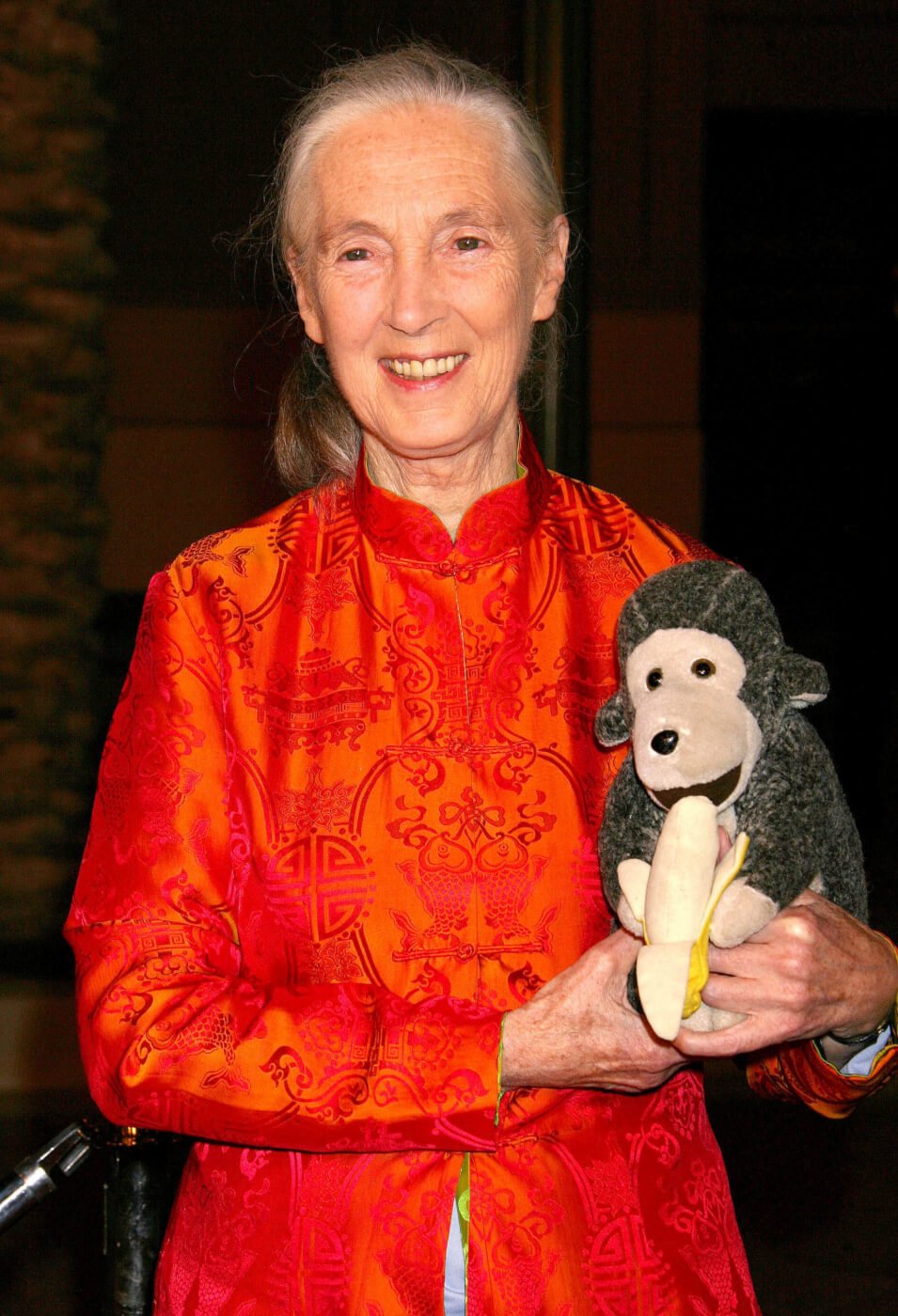JANE
Dr. Jane Goodall has become an icon through her long-term study of chimpanzees in the wild. Jane, the documentary on her life and work, is an extraordinary achievement. It's not a hagiography or a dry recitation of her life and times, but a portrait of a remarkable yet quiet figure.
Jane is also unique in that it features recently rediscovered footage found in 2014 that was shot in the 1960's by acclaimed wildlife photographer Hugo van Lawick which was thought lost forever. The film intercuts this footage with a current interview with 83-year-old Goodall as she is interviewed about her life and work.
Jane Goodall, then a 26-year-old secretary, was sent in 1957 by renowned archeologist Louis Leakey to study the chimpanzees in their natural environment. Goodall was selected not because of vast scientific and/or academic study but despite of it, as Leakey wanted someone to go to Gombe without any preconceived notions. Goodall was the perfect candidate as she had an open mind and more important, an eagerness and passion for animals.
With only her mother as a chaperone, she soon takes to the 'time of discovery', adopting a routine of staying all day moving and searching for the group of chimps and then coming down the evening to write. Her observations, unencumbered by academic study, allows for unprejudiced views. Eventually the chimps start warming to this 'strange white ape' as Goodall describes herself as, coming down to camp to take bananas. However, she notes that they become wildly aggressive and dangerous, until with some human ingenuity they reach a peaceful settlement and exchanges.
To keep the funding, the National Geographic Society sends van Lawick to photograph and document her work. She is woman, he is man...after he leaves he proposes and she accepts. Despite never planning for a life as a wife and mother, she finds eventually she becomes both.
She also endures the sometimes patronizing views of men on her work, with newspaper reports sometimes focusing more on her looks and legs than on her field research. "Beauty and Her Beasts" and playing on her name (She Jane, He Chimp) being some of the more quippy headlines. Goodall finds correlation between the female in her group, whom she names Flo and herself, especially after Flo gives birth to her own son, whom Goodall names Flint.
Mother, Dr. Spock, and Flo are the best sources to raise children, she remarks, even if her son, nicknamed Grub ended up hating chimps. At least he grew different than Flint, who in a sense refused to grow up, insisting on having Flo carry him on his back long after he grew to adulthood with Flo too old to push him to independence. When Flo dies, Flint lost all purpose, dying three weeks after his mother. Flo's death also broke the group apart, and Goodall sees that her original views of chimpanzees as kinder than humans is not true: they can be just as bound to cruelty as humans.
Jane gives us a fascinating portrait of this legendary figure, and director Brett Morgen so brilliantly blended the rediscovered van Lawick footage (of which Morgen culled 100 hours worth of) into a tapestry that gives us insight into both Goodall the researcher and Goodall the woman. Jane does not make Goodall into some saint or aloof intellectual or crazed environmentalist. Rather, the simplicity, even ordinary nature of Goodall comes across both in the van Lawick footage and her interview, where she looks back with no anger and very little if any regret.
For example, when thinking back to how sexism played a role in her work being overshadowed by her gender or society's perceptions of her beauty, she in her soft-spoken manner comments that she used this to her advantage. The Jane Goodall in Jane comes across as an extraordinary yet quite ordinary person, one who sees her life as extremely blessed to do what she dreamt of doing: living with animals in Africa.
We do, through van Lawick's footage, also get wry moments of life, such as seen poor Mother Goodall's soap flow down the river while she lathers her face with it. When her hand tries to reach for it again and cannot find it, we see the perfectly human reaction: her putting her hand all around to 'find' it while blind.
Jane is also accompanied by another brilliant Philip Glass score. Unlike other compositions by Glass, Jane almost seemed to allow a little bit of humor in the music when the chimps come down en masse to steal bananas. Glass' score is one of the aspects that makes Jane such a success to view.
The work that Goodall has done has not only given us insight into the wild and the importance of preserving it, but also insight into what makes humans unique in the animal kingdom. Goodall's work showed that chimpanzees are able, like humans, to form tools, but that they are as capable of war and aggression as we are. They, however, do not appear to have a vast sense of what we would call 'morality' (none appear to think that stealing was 'wrong', though if they did, would they consider it 'stealing'?). Chimpanzees do not have an issue with the females having sexual encounters with many males to procreate, while humans do, or at least argue about it.
Goodall remarks that in chimpanzees, males are the dominant sex, something that humans have managed to overcome to varying degrees.
There is still so much to learn, about chimpanzees, about humanity. Jane will be, I think, a definitive portrait of this most fascinating of ordinary people.
 |
| Born 1934 |
DECISION: A-


No comments:
Post a Comment
Views are always welcome, but I would ask that no vulgarity be used. Any posts that contain foul language or are bigoted in any way will not be posted.
Thank you.